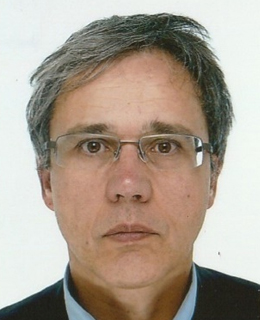
Antoine B. Rauzy
NTNU
Professor
Lecture Title: Towards Simulated System Architecture with Sigma
Lecture Summary/Abstract:
This talk aims at presenting Sigma, a new modeling language for dedicated to the design and the analysis of complex technical and socio-technical complex systems.
Graphical notations such as SysML are a key asset for Systems Engineering. However, they lack a formal semantics. Consequently, attempts to perform computerized simulations from these models are tool-dependent at best and require designing an ad-hoc semantics on top of the notations.
The success of modeling environments such as Matlab-Simulink and Modelica (Multiphysics simulation), AltaRica (safety), or Vensim (Systems dynamics) shows however the interest of computerized simulations for complex system design and analysis.
Starting from the above consideration, we decided to design Sigma. Sigma is object-oriented and has a formal semantics in the first place.
Sigma relies onto two pillars. First, a description of the structure of the system under study as a hierarchical network of interconnected components. Second, a description of the activities performed in the system. These activities change the state of the system and possibly its structure. Interactive and stochastic discrete event simulations can then be performed to assess key performance indicators.
We are currently developing a full modeling environment for the design and the simulation of Sigma models. We are also already applying it on industrial applications.
The experience shows that designing Sigma models is extremely useful to better understand and to clarify what the behavior of the systems under study. Sigma makes possible high-level representations of the dynamics of the systems, i.e. representations at the right level of abstraction for systems engineers and system architects.
In this presentation, we shall introduce the key features of Sigma and illustrate by means of examples how it is used.
Biography:
Professor Antoine B. Rauzy is currently with the Norwegian University of Science and Technology (Trondheim, Norway).
During his career, he moved forth and back from academia to industry, being notably senior researcher at CNRS, associate professor at Universities of Bordeaux and Marseilles, professor at Ecole Polytechnique and CentraleSupélec, CEO of the start-up ARBoost Technologies, and director of the R&D department of Systems Engineering at Dassault Systemes (largest French software editor) and chief scientific officer at Systemic Intelligence.
Professor Rauzy got his PhD in 1989 and his tenure in 1996, both in computer science. He works on the reliability engineering for more than 30 years and on systems engineering for more than 10 years.
He published over 200 articles in international journals and conferences. He is on the advisory boards of several international conferences and journals and is regularly invited to deliver seminars and keynote talks.
He renewed mathematical foundations and designed state-of-the-art algorithms of probabilistic safety/risk assessment. He is also the main designer of the AltaRica language and proposed state-of-the-art concepts for model-based systems engineering.
He developed safety/risk assessment software that are daily used in industry and that are acknowledged as best-in-class tools.
Professor Rauzy teaches advanced programming methods, model-based systems engineering and reliability engineering. He has been the adviser of numerous master theses, twenty PhD theses and several post-doctoral studies.
He managed numerous collaborations between academia and industry, in Europe, in the USA and in Japan.






 loading......
loading......